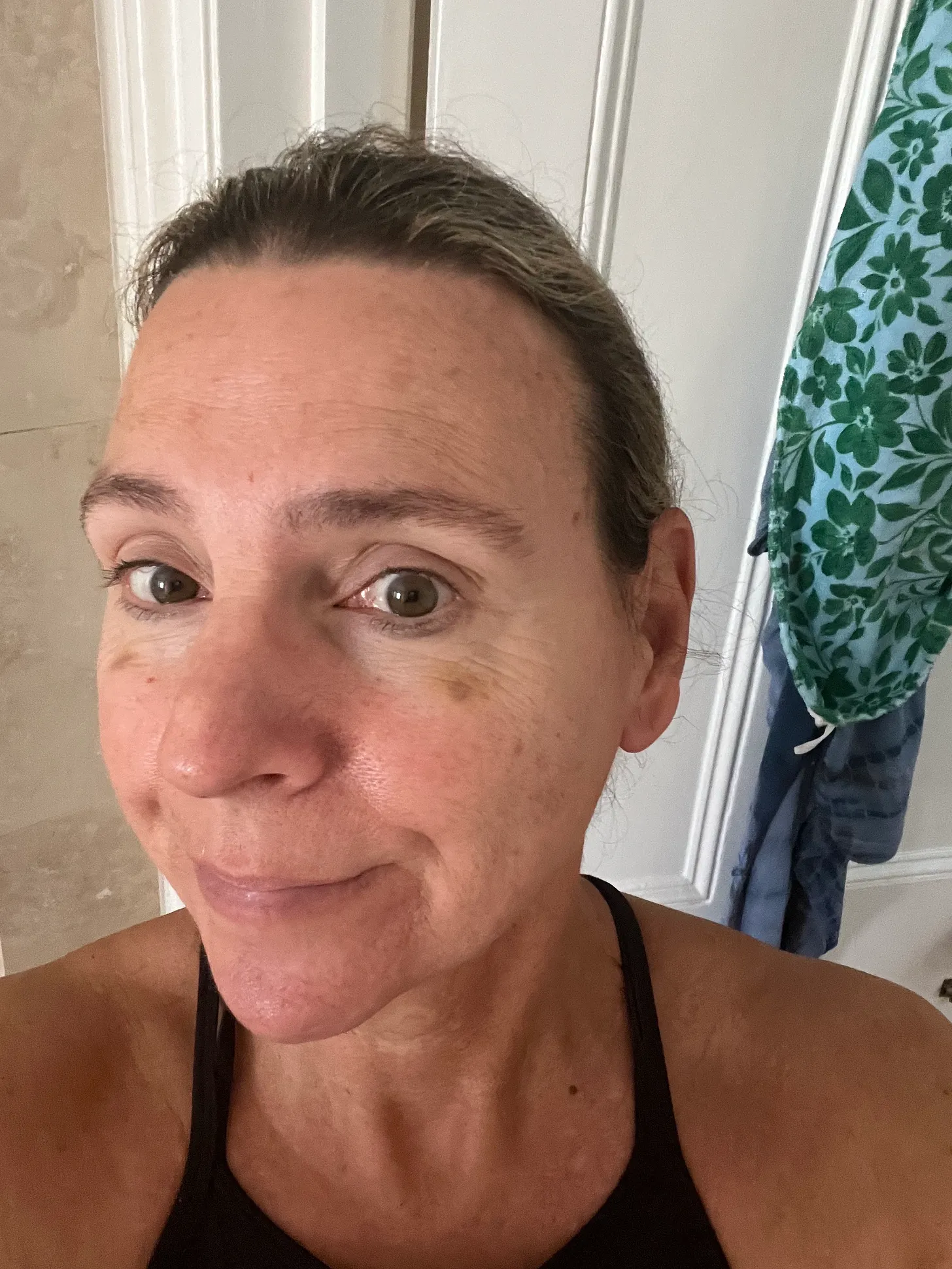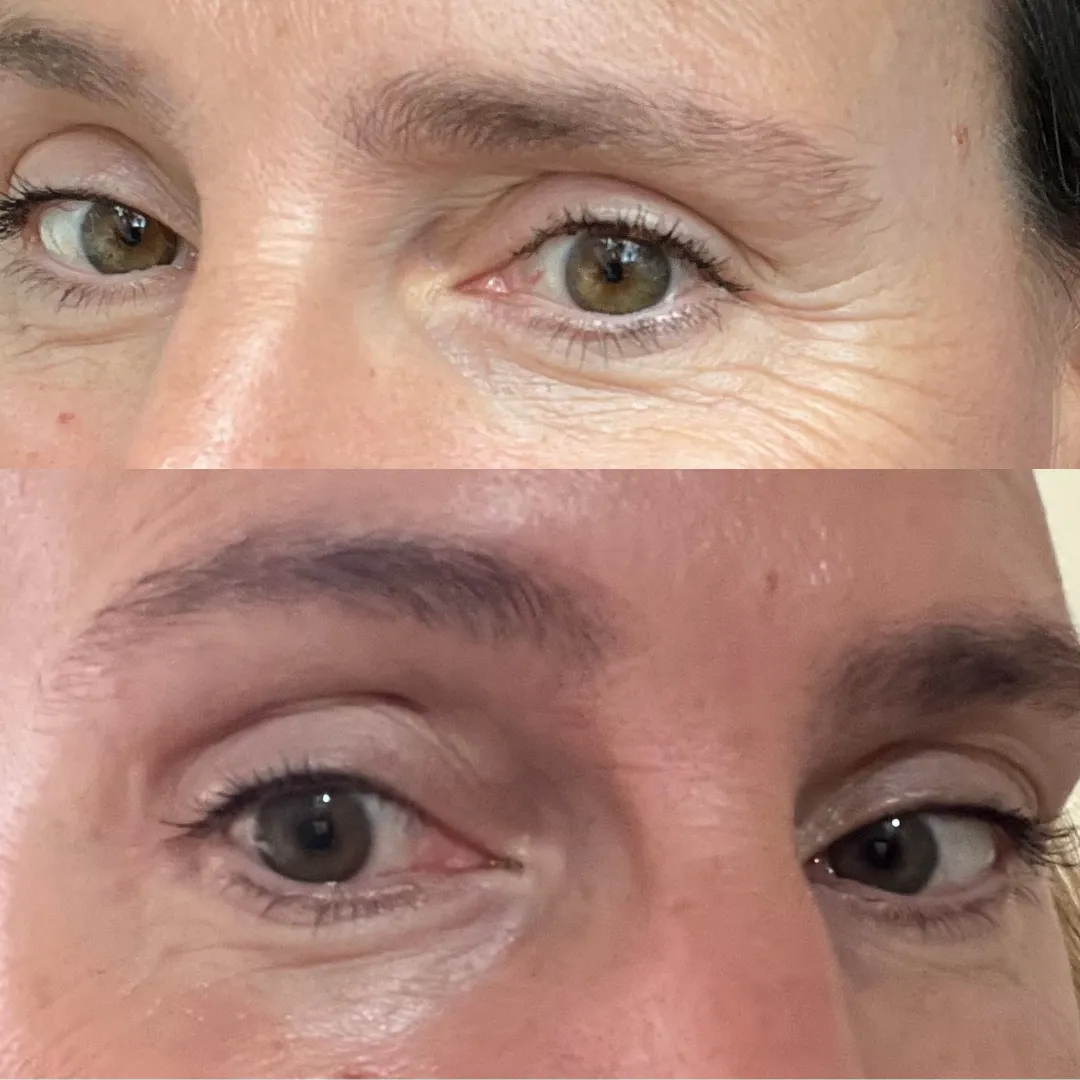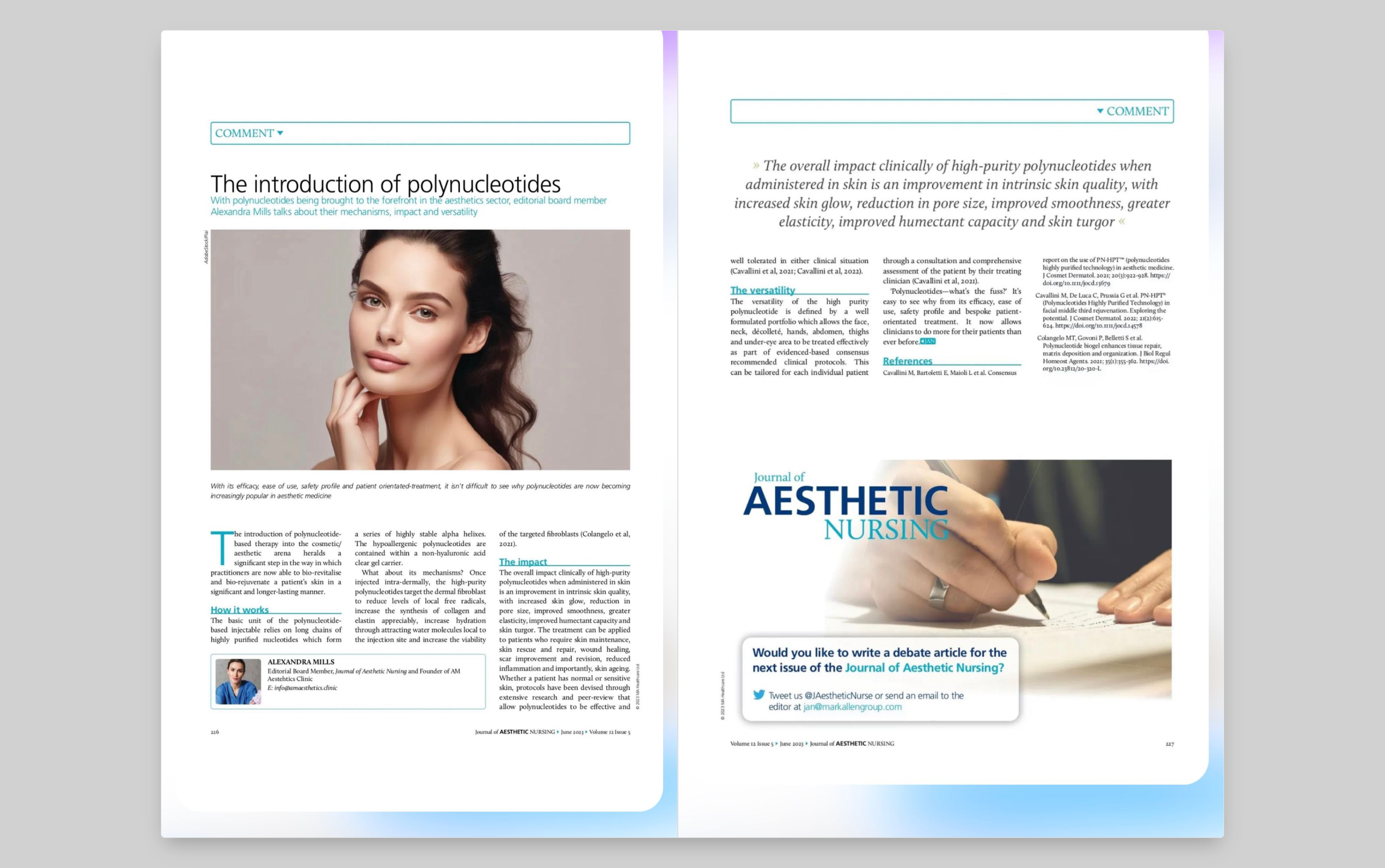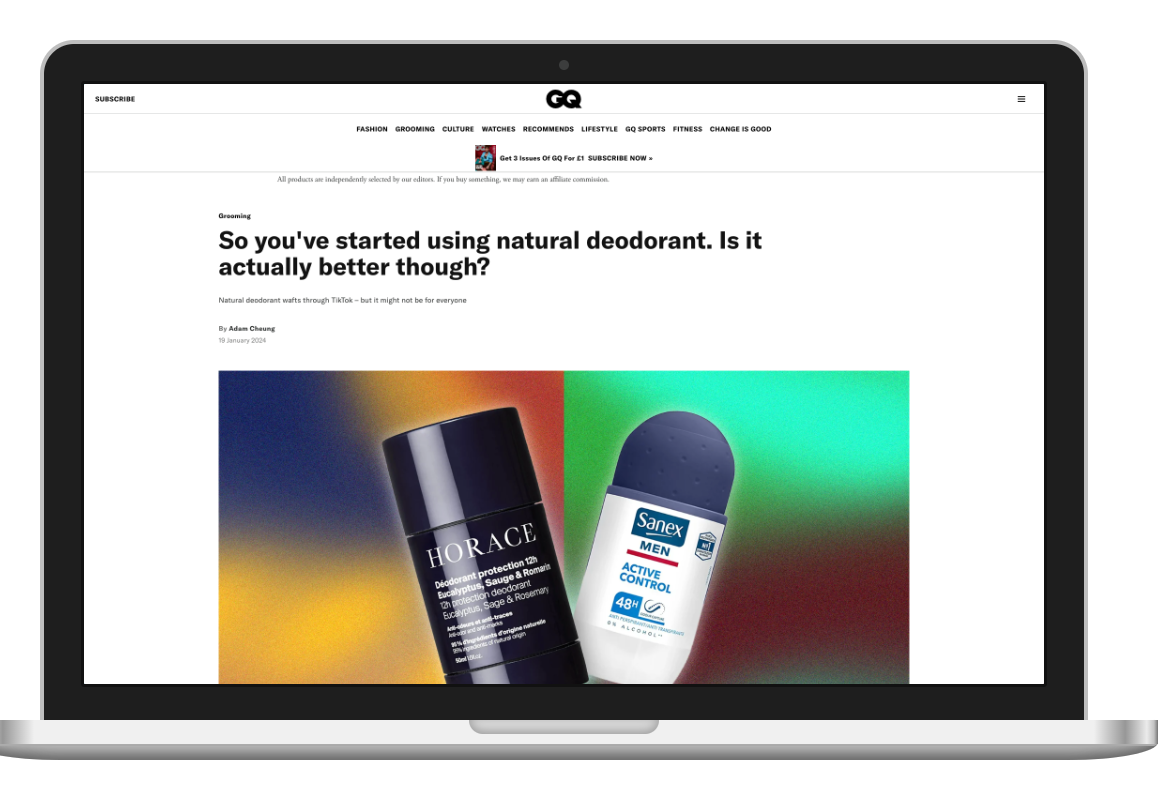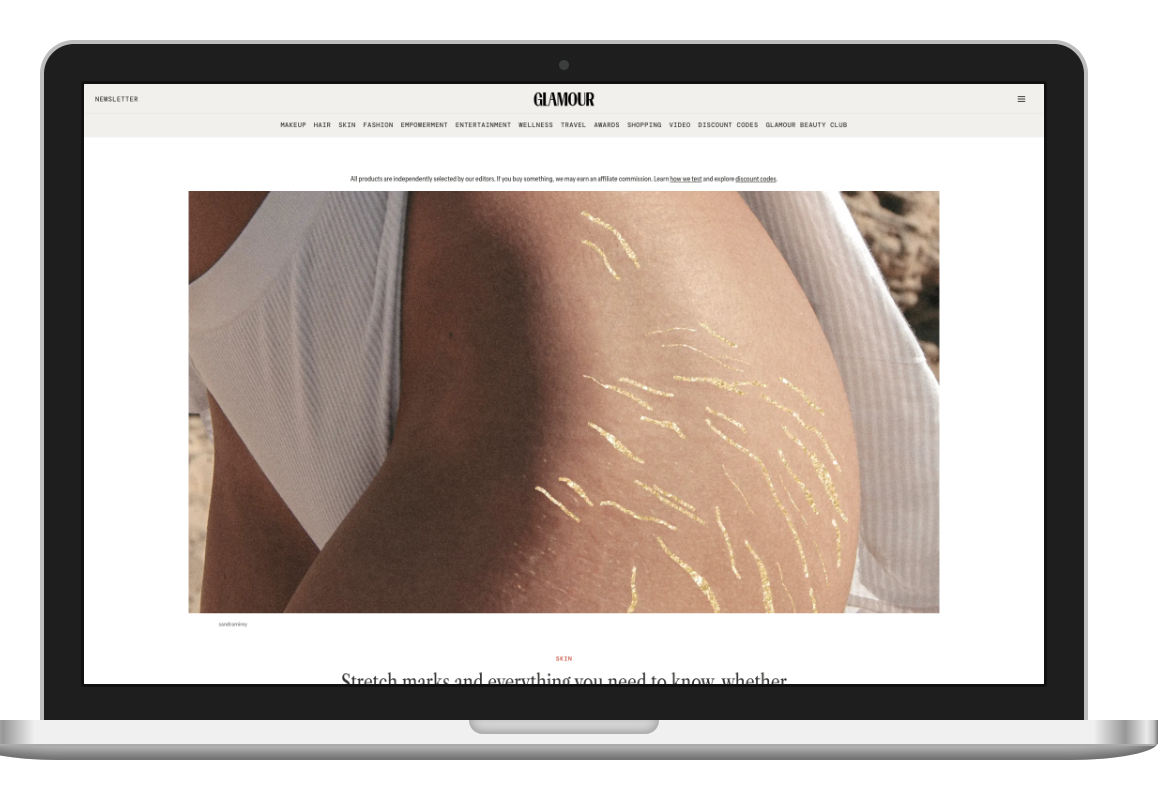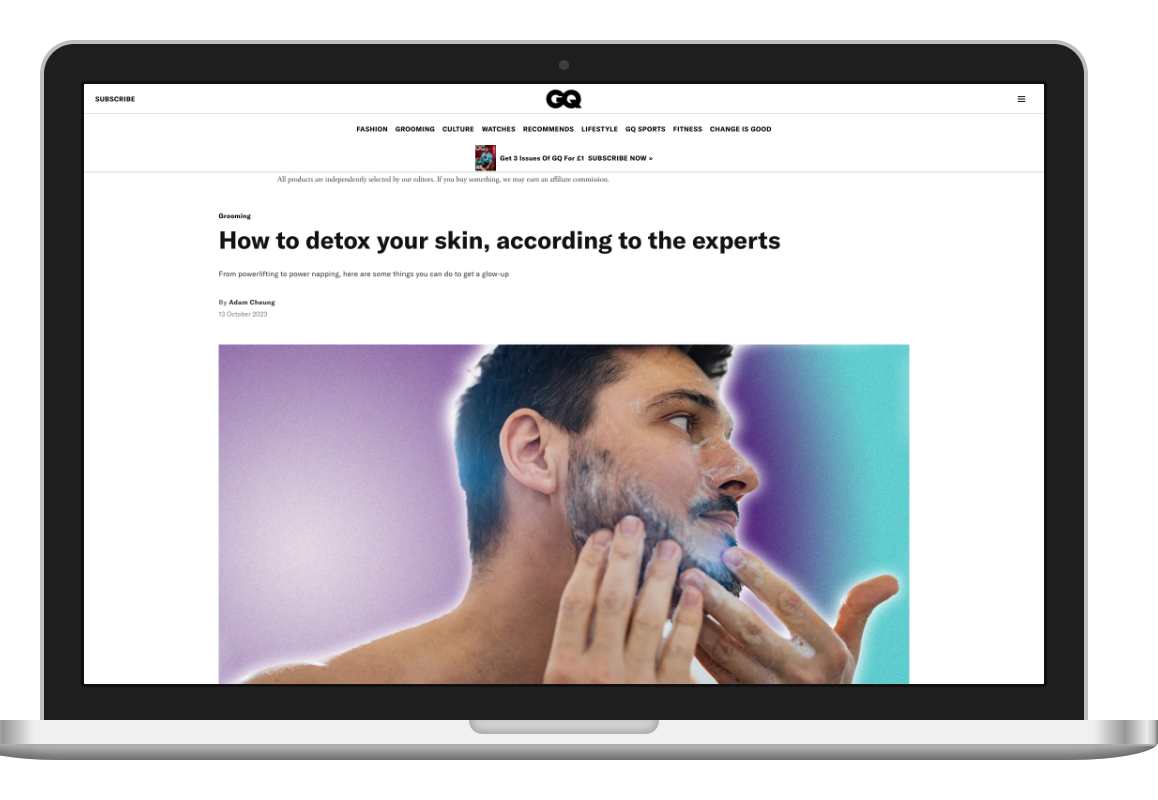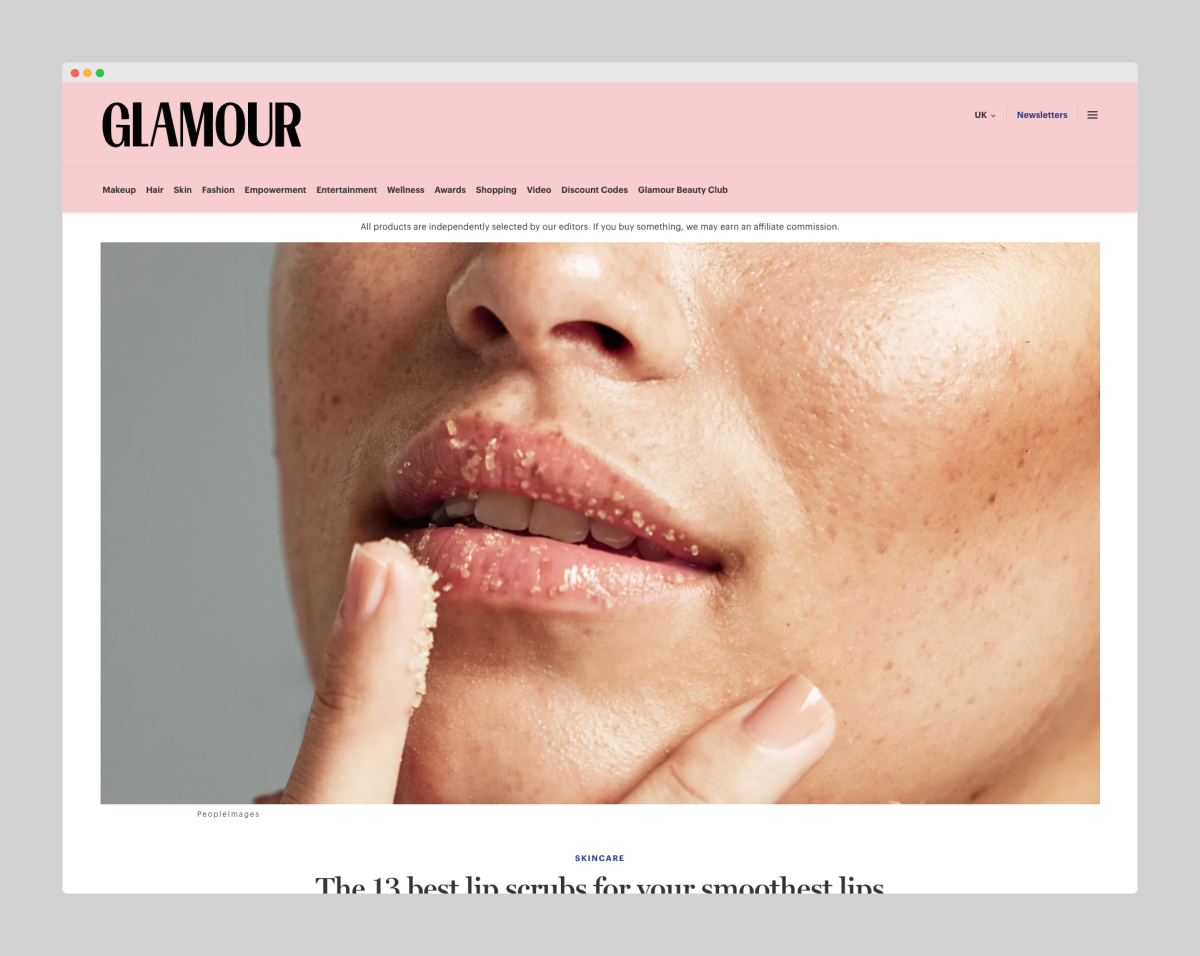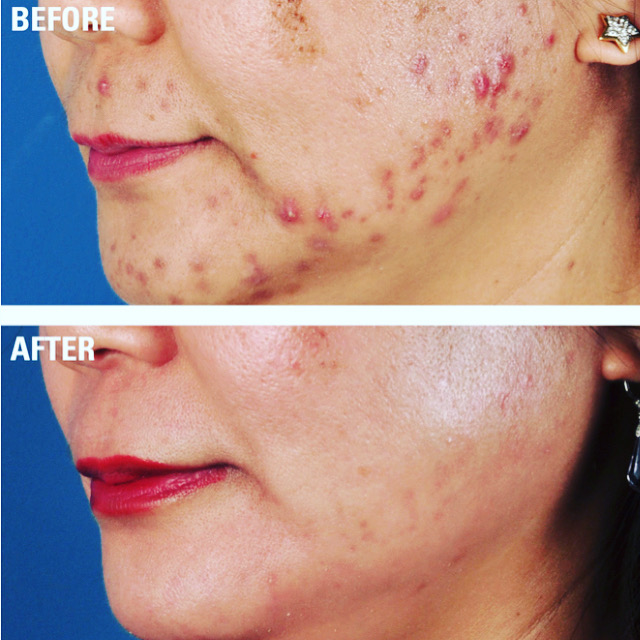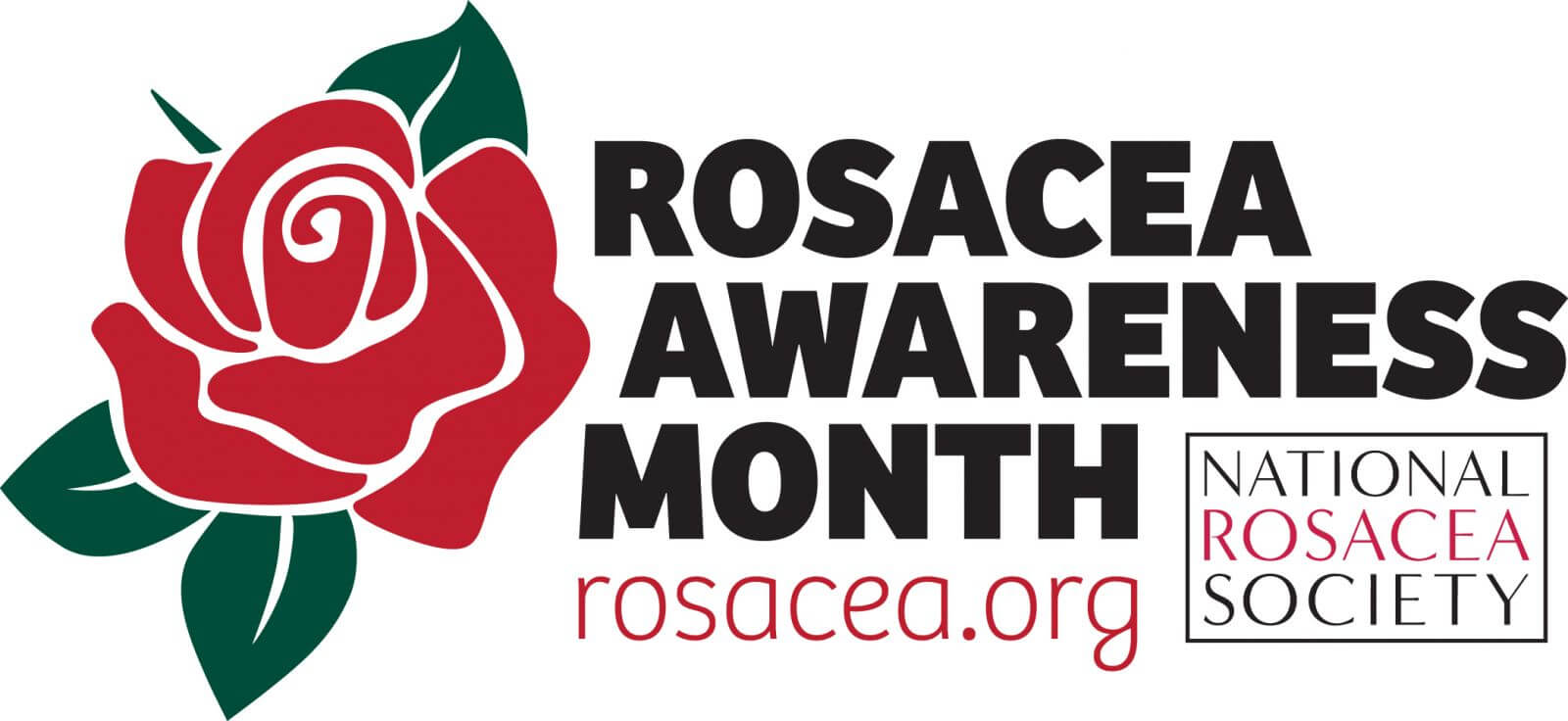HArmonyCa is a first-in-class, dual-action, synthetic non-pyrogenic biodegradable hybrid dermal filler composed of calcium hydroxyapatite (CAHa) (55.5%) and cross-linked hyaluronic acid (44.5%) that is clinically indicated to enhance volume as well as lift and rejuvenate the mid and lower face and overlying skin. Its effects are illustrated in three case studies. Significant and immediate improvements in cheek projection, lifting of the midface, reduction of the pre-jowl sulcus and in the depth of the nasojugal groove were observed in these cases. The hybrid injectable is effective with a good tolerability profile, with the patients reporting a high level of satisfaction. The early clinical changes that were seen resulted mainly from the cross-linked hyaluronic acid filler and, secondly, from the CAHa. CAHa microspheres have been demonstrated to provide long-term efficacy through regional collagen synthesis. Effects will be monitored in the treated cases at 6, 12 and 18 months.
The facial ageing process is multifactorial, resulting in a combination of changes that affect the face layer by layer. Superficially, skin atrophy with thinning of the epidermis and the deeper dermis together with redistribution and loss of subcutaneous fat, coupled with bone remodelling and resorption, converge to different extents in any individual (Coleman et al, 2006; Swift et al, 2020). The underlying genetics, age, bone structure, ethnicity, degree of exposure to both UVA and UVB light, coexisting comorbid states and dietary habits are all key to how an individual ultimately ages, resulting in the tell-tale signs of volume loss and increased skin laxity (Gonzaga da Cunha et al, 2020; Lipko-Godlewska et al, 2021).
Increased demand for biostimulators has been fuelled by the need for dermal fillers that trigger biostimulation and collagen synthesis which have longer-lasting results. Recommendations of serial dilution 1:1 and hyperdilution 1:3–1:4 of calcium hydroxyapatite (CAHa) have emerged from 2018 and were reviewed in a consensus recommendation peer- reviewed article (de Almeida et al, 2019). This allowed for a more universal approach to treatment that appeared to be highly effective, versatile and with a good tolerability profile.
Early studies showed the versatile nature of the rejuvenating capacity of CAHa beyond the face with indications extended to the hand (Haq et al, 2010; de Almeida et al, 2019). The European Dermatologic Consortium on Hand Augmentation, headed by Haq et al (2010), carried out the first hand rejuvenation study using CAHa as part of a large, multinational, multicentre hand rejuvenation clinical trial. These combined findings underscore and validate the approach taken by Allergan, an AbbVie company, with its investment into innovative hybrid injectable HArmonyCa following acquisition of Luminera’s dermal filler portfolio.
HArmonyCa is a first-in-class, hybrid dermal filler. Technologically advanced, it has a unique dual impact on the dermis, particularly when used by a practitioner in the indication of aesthetic facial augmentation. The product is the latest addition to the advanced portfolio of hyaluronic dermal based fillers in Allergan’s Juvéderm range (Allergan, 2019; Allergan Aesthetics, 2021a; 2021b; 2021c; 2021d).
HArmonyCa was originally developed in Israel and made available commercially in Brazil, Israel and Ukraine. Having now secured a CE mark, it is being launched across Europe and in selected Middle Eastern and African countries. Allergan Aesthetics will continue to explore and work with regulatory authorities around the world to make HArmonyCa more widely available in the future.
The concept and effects of HArmonyCa are based on two key factors: first, the use of a cross-linked hyaluronic acid dermal filler (De Boulle et al, 2013); and, second, the key ingredient of CAHa (Gonzaga de Cunha et al, 2020; Allergan Aesthetics, 2021a). This is provided in the form of microspheres which, when combined, provide for a filler whose performance exceeds any product currently available in the aesthetic arena. From a tolerabilty profile perspective, CAHa microspheres are porous and are naturally degraded and eliminated from the body over 6 months after injection.
Decades of use of cross-linked hyaluronic acid dermal fillers such as Juvéderm (Coleman et al, 2006; Kahn et al, 2010; Lipko-Godlewska et al, 2021) and CAHa have led to a substantial accumulation of evidenced-based data relating to both types of dermal fillers in terms of their excellent tolerability profile and efficacy. The combination of these two distinct technologies may be a true game changer in non- surgical injectable facial augmentation, allowing for a more multidimensional approach to the ageing face (Zerbinati et al, 2018; Lipko-Godlewska et al, 2021).
Cross-linked hyaluronic acid fillers lead to immediate changes with hydration, lift and volume depending on their specific rheology (De Boulle et al, 2013; Allergan Aesthetics, 2021b). CAHa is provided in the form of smooth microspheres 25–45 microns in diameter, providing a more sustained and longer- term result in terms of lifting impact and duration of effect (Allergan, 2021a). The reason for this is the increased synthesis of collagen from the hydroxyapatite microspheres, which directly activate regional fibroblasts in the dermis. The biological advantage conferred by the microspheres is that they have a high surface:volume ratio because of their sheer number so more collagen can be synthesized in any one area (Allergan Aesthetics, 2021c).
HArmonyCa: product and indications
HArmonyCa is indicated in patients looking for a multidimensional approach to the ageing face. It can be used to treat men and women in middle age who are looking for lift, volume or rejuvenated skin. All information in this section is taken from the product leaflet (available from the authors on request by email).
The product is an injectable implant that is approved for subdermal administration for the correction of moderate-to-severe facial wrinkles and folds in the face and to treat the dorsum of the hand. It is also indicated for deep injection (subdermal, deep dermal and/or supraperiosteal) for soft tissue augmentation to improve moderate-to-severe loss of midface volume and jawline contour.
HArmonyCa, which contains lidocaine, is a sterile, apyrogenic, viscous, opaque, injectable, semisolid, latex-free and biodegradable dermal implant. It consists of synthetic CAHa microspheres 25–45 microns in diameter, formulated to a concentration of 55.7%, suspended in a cross-linked sodium hyaluronate gel from a non-animal source, and is provided in a 1.25m l prefilled syringe. The product contains 0.3% (w/v) lidocaine hydrochloride to minimise pain during treatment. The implant is intended for subdermal and deep dermal use in specific facial regions to rejuvenate, volumise and lift. The hybrid filler can be extended to use in the dorsum of the hand to rejuvenate target zones.
HArmonyCa is contraindicated in patients with severe allergies with a history of anaphylaxis, and multiple severe allergies (hypersensitivity) to any of the components: lidocaine; amides; hyaluronic acid; and/or CAHa. It is also contraindicated in patients with bleeding disorders and autoimmune disorders (e.g. connective tissue disease). These products should not be used in anyone with active skin inflammation or an infection. Pregnant and breastfeeding mothers should not be treated, nor anyone aged <18 years. The tolerability profile and effectiveness for use in the lips has not been established so, at present, treatment of the lips and tear trough should be avoided (Allergan Aesthetics, 2021d).
Health professionals such as nurses, doctors and dentists should have training, experience and knowledge about the anatomy in and around the injection site and should be familiar with the product’s properties and educational material.
Process and effects
HArmonyCa can be used to target the ageing face when injected into the sub- or deep dermal plane. The dual-acting dermal filler redresses the volume loss and soft tissue structural changes that occur as part of the ageing process.
Using a cross-linked hyaluronic acid dermal filler mixed with CAHa has a synergistic effect, both immediately and in the long term. This synergism is demonstrated by the fact that the overall impact of HArmonyCa’s properties exceeds the sum of each of the two constituents alone (Allergan Aesthetics, 2021d).
In terms of understanding what this means in the context of the cellular level, the dermal filler acts as a foreign body implant that triggers a sequence of events from regional inflammation followed by macrophage infiltration and antigen presentation. This occurs within a 2–3 week period; this is often described clinically as a time when the filler is settling (Jennen et al, 2022).
Cellular senescence is the process by which cells over time undergo mitosis and eventually become no longer able to divide any further and, ultimately, die. This occurs with the epithelial cells of the epidermis, fibroblasts in the dermis, adipocytes in the superficial and deep fat compartments of the face and osteoblasts/osteoclasts of the skeleton. The effect of senescence are diminished elastin, collagen and glycosaminoglycans (including hyaluronic acid) and bone resorption.
HArmonyCa addresses several of these changes post injection with the cross-linked hyaluronic acid component of the injectable targeting hydration the loss of glycosaminoglycans (impacting lost volume) and later stimulation of fibroblasts to restore loss of collagen type III (early response) and later with type I collagen typically surrounding the CAHa microspheres. The individual microspheres are too large to be phagocytosed by macrophages. This maintains their longevity of 12–18 months.
Extracellular matrix remodelling occurs as a result of both components of HArmonyCa. Subcellular changes occur, leading to the suppression of several pro-ageing metallomatrixproteinases (MMP1 and MMP9) and upregulation of the anti-apoptotic tissue metallopeptidase 1 (TIMP1), which inhibits cellular senescence (Gonzaga et al, 2020; Laquerriere et al, 2004).
Administration, tolerability profile and aftercare
The treatment takes less than 20 minutes to perform depending on the complexity of the treatment plan. The procedure can be carried out in a clinic or outpatient setting. Before HArmonyCa is injected, an initial patient assessment and consultation is carried out, and informed consent is given. The area to be injected is marked and photographed. With the patient in an upright position, the area to be injected is cleaned with Clinisept (a solution containing phosphoric acid and sodium hypochlorite) followed by the application of topical lidocaine or tetracaine. The practitioner should consider the technique to use (linear retrograde injections or bolus administration), the area to be treated, the depth of the injection (intradermal/deep dermal/subdermal) and the volume to be used. In the authors’ view, either a 25G cannula or 27G needle, the retrograde linear thread, serial puncture, fanning, cross-hatching or bolus injection should be performed slowly using 0.05m l–0.2m l threads or a bolus volume of 0.2m l–0.4m l if indicated. An initial volume of
0.5m l–1.5m l on both sides would be the initial aim. When withdrawing the cannula/needle, the practitioner should not inject material into the superficial dermis to avoid creating white nodules of hyaluronic acid/CAHa material at the exit point. After the product has been placed, it can be massaged and moulded to increase homogeneity with the tissue plane. If further augmentation is required and indicated, the patient can be advised to have an additional treatment on or after 3 months to ensure that the product is integrated and there is plateauin of any ongoing neocollagenesis.
In the event of a vascular occlusion, standard emergency management following the ACE guidelines (Murray et al, 2021) should be followed as for any other hyaluronic acid filler. Hyalase can and should be used in such a case with practitioners following the step-by-step management protocol set out by Murray et al (2021).
Common complications are bruising, swelling, pain, tenderness and itching. Advise patients to avoid exercise for 24 hours and any sunbeds, saunas and UV light therapy for a week. Aftercare and reassurance should be given with a follow-up review.
The decision on whether use of a needle or cannula will depend on what one is trying to achieve. In general, a deeper injection where lift and volume are the main objectives would be best served with a needle, while a cannula would allow the practitioner to rejuvenate a large target area better. In both scenarios, multilayering of the filler can be done, although less trauma is observed using a standard 25G or 23G cannula than a 27G needle. Use of cannulas results in better product confinement to the deep anatomical layers, whereas a sharp needle technique results in material placement in the deepest layer from the periosteum to more superficial layers.
The authors are of the analytical opinion that retrograde injection technique delivering 0.05–0.1m l per thread and or a bolus administration of 0.1–0.2m l are both suitable methods of administration, depending on the clinical end goal: retrograde linear threading delivers improved rejuvenation while a bolus-type injection creates greater volumisation and lift (Braz et al, 2020; Kahn et al, 2010; Hee et al, 2015; Lipko-Godlewska et al, 2021).
The tolerability profile of HArmonyCa is exemplary. As with any dermal filler, one must be clear about the depth and volume to be injected to avoid potential nodules from product that has not integrated with the surrounding tissue.
Vascular occlusion can occur with any dermal filler and is best avoided by understanding key anatomical structures as well as checking for flashback on withdrawal of the plunger in the syringe for at least 10–20 seconds. The downtime after injection is minimal, with minor swelling, redness and bruising always possible. Simple advice on standard aftercare using HArmonyCa post-treatment guidance as with any dermal filler injectable should be followed. Patients should avoid strenuous exercise and exposure to sun or heat for 24 hours after treatment or until any initial swelling, significant bruising and redness have resolved.
Read more

